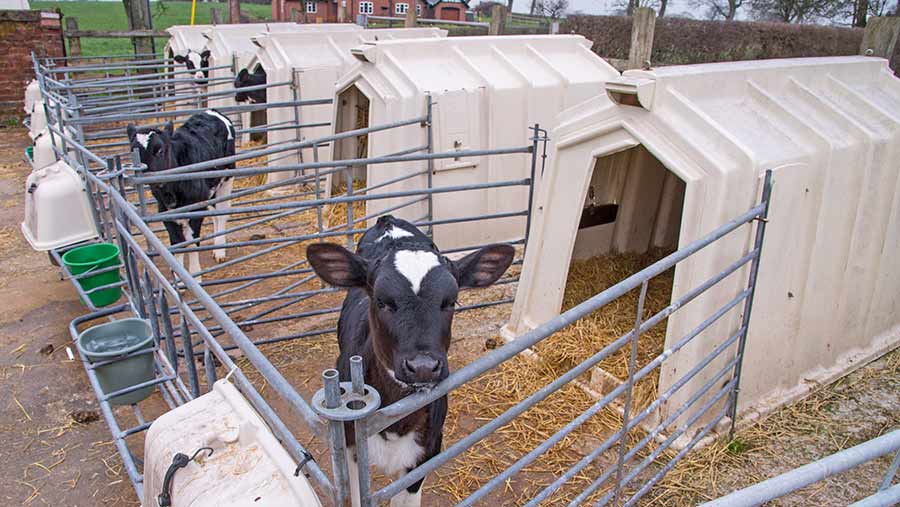5 essential ingredients for good calf housing
 © FLPA - John Eveson/REX/Shutterstock
© FLPA - John Eveson/REX/Shutterstock Before deciding on the best calf housing there are five key areas that must be considered to ensure the calf is kept in the best environment.
Below Jamie Robertson at Livestock Management Systems talks Farmers Weekly through these key considerations and why they are essential to good calf health and growth.
See also: Buyers guide: Six options for calf housing compared
Key considerations
Temperature
In the first four weeks of life, calves can be cold in temperatures below 15C.
This can hit growth rates as energy is drawn from the diet to provide sufficient warmth. Where conditions are cold, top nutrition, jackets and quartz heaters or lamps should be provided.
Even so, it is important for housing that relies on natural ventilation to be small enough so that the calves raise the air temperature around them.
A warmer environment inside than outside will encourage heated air to move upwards, taking with it moisture and pathogens.
Fresh air
Providing there is an adequate opening at the ridge, warmed air is drawn out and replaced by cooler fresh air through openings lower down in the building.
This is known as the stack effect and it can create an airflow even when the air outside is still.
Having a building that ventilates when it is not windy is critical and should be included in investment decisions. Larger buildings may need mechanical ventilation costing in the thousands to install.
Air speed/draughts
While movement of fresh air into the building is vital, it is equally important to keep out draughts, which are potentially the most damaging environmental aspect that the calf is exposed to.
In large buildings, this can be a big problem with air able to swirl and cause draughts in any direction. Where this is the case, barriers need to be erected up to calf head height. For outside housing – hutches and igloos – the opening should be out of the prevailing wind.
Moisture
The amount of moisture in the air is determined by the number of animals respiring in the airspace, drinking water, animal waste, and any ingress of rainfall.
While good ventilation replaces the moist air, drainage is also key. Large constructions need adequate channels to remove water while moveable housing such as hutches and igloos must avoid areas prone to waterlogging.
Hygiene
Most larger buildings are difficult to clean adequately.
The interior surfaces of buildings that are not regularly cleaned are covered in a thin biofilm that can be shifted only with aggressive cleaning and disinfection.
If not, pathogens can survive from the previous batches to infect vulnerable, incoming youngstock.
Hutches and igloos are therefore intrinsically safer because they can be washed down and disinfected more thoroughly.
Legal space requirements for calves
- Up to 100kg calves must have more than 1.5sqm of space
- Calves can be kept singly only for the first eight weeks. After that they must be group-housed
- Calves must have a dry and comfortable bed
